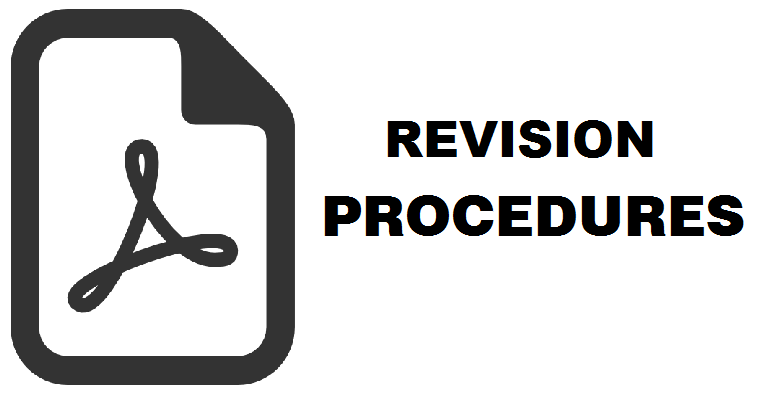Alur kerja pembelajaran mesin pada pemodelan spasial kerawanan longsor
Guruh Samodra(1*)
(1) Faculty of Geography, Universitas Gadjah Mada, Yogyakarta.
(*) Corresponding Author
Abstract
Abstrak Salah satu instrumen pengurangan risiko bencana longsor adalah peta kerawanan longsor yang dihasilkan dari pemodelan spasial. Alur kerja pemodelan spasial kerawanan longsor menggunakan model pembelajaran mesin belum terakomodasi dalam Standar Nasional Indonesia (SNI) yang berlaku saat ini (tahun 2024). Penelitian ini berusaha menjelaskan variasi langkah-langkah dalam alur kerja pembelajaran mesin dan menunjukkan perbedaannya dengan alur kerja model statistik. Model statistik regresi logistik dan model pembelajaran mesin random forest dipilih untuk menjelaskan perbedaan alur kerja pemodelan spasial kerawanan longsor. Formulasi alur kerja pemodelan spasial kerawanan longsor diterapkan untuk memetakan kerawanan longsor di Kabupaten Pacitan. Pada tanggal 27-29 November 2017, 743 longsor terjadi di Kabupaten Pacitan dipicu oleh hujan yang sangat lebat akibat Siklon Tropis Cempaka. Kabupaten Pacitan merupakan salah satu wilayah rawan longsor di Provinsi Jawa Timur. Alur kerja pemodelan spasial kerawanan longsor terbagi atas beberapa langkah yaitu penyiapan data, pra-pemrosesan data (pre-processing), melatih dan menyetel model, memvalidasi model, pemodelan spasial, dan uji akurasi. Hasil uji akurasi model RF dan LR yang diterapkan di Kabupaten Pacitan masing-masing sebesar 0,75 dan 0,73. Penelitian ini diharapkan dapat memberikan masukan dalam penyusunan SNI pemetaan kerawanan longsor di masa mendatang serta dapat digunakan sebagai acuan dalam pemetaan kerawanan longsor secara umum di Indonesia.
Abstract One of the landslide risk reduction instruments is landslide susceptibility maps which can be produced by spatial modeling. The landslide susceptibility modeling based on machine learning workflows have not been accommodated in the current verison of Indonesian National Standard (SNI). This study seeks to explain the variation of machine learning workflows and show how they differ from statistical learning workflows. Logistic regression model and random forest machine learning models were selected to explain variations in landslide susceptibility modeling workflows. The modeling workflows were applied to map landslide susceptibility in Pacitan Regency. On 27-29 November 2017, 743 landslides occurred in Pacitan Regency triggered by very heavy rain due to Tropical Cyclone Cempaka. Pacitan Regency is one of the landslide-prone areas in East Java Province. The landslide susceptibility modeling workflow is divided into several steps, i.e. data preparation, data pre-processing, training and tuning the model, validating the model, spatial modeling, and accuracy testing. The accuracy test results of the RF and LR models applied in Pacitan Regency were 0.75 and 0.73 respectively. This research is expected to provide a benchmark for landslide susceptibility mapping in Indonesia.
Full Text:
PDFReferences
Abraham, M. T., Satyam, N., Lokesh, R., Pradhan, B., & Alamri, A. (2021). Factors Affecting Landslide Susceptibility Mapping: Assessing the Influence of Different Machine Learning Approaches, Sampling Strategies and Data Splitting. Land 2021, Vol. 10, Page 989, 10(9), 989. https://doi.org/10.3390/LAND10090989
Agresti, A. (2013). Categorical Data Analysis. John Wiley & Sons, Ltd.
Amato, F., López, A., Peña-Méndez, E. M., Vaňhara, P., Hampl, A., & Havel, J. (2013). Artificial neural networks in medical diagnosis. Journal of Applied Biomedicine, 11(2), 47–58. https://doi.org/10.2478/V10136-012-0031-X
Badan Standardisasi Nasional. (2016). Standar nasional Indonesia 8291:2016 Penyusunan dan Penentuan Zona Kerentanan Gerakan Tanah.
Beven, K. J., & Kirkby, M. J. (1979). A physically based, variable contributing area model of basin hydrology. Hydrological Sciences Bulletin, 24(1), 43–69. https://doi.org/10.1080/02626667909491834
Biau, G., & Scornet, E. (2016). A random forest guided tour. Test, 25(2), 197–227. https://doi.org/10.1007/S11749-016-0481-7/METRICS
Breiman, L. (2001). Random forests. Machine Learning, 45(1), 5–32. https://doi.org/10.1023/A:1010933404324
Cascini, L. (2008). Applicability of landslide susceptibility and hazard zoning at different scales. Engineering Geology, 102(3–4), 164–177. https://doi.org/10.1016/j.enggeo.2008.03.016
Catani, F., Lagomarsino, D., Segoni, S., & Tofani, V. (2013). Landslide susceptibility estimation by random forests technique: Sensitivity and scaling issues. Natural Hazards and Earth System Sciences, 13(11), 2815–2831. https://doi.org/10.5194/NHESS-13-2815-2013
Chen, W., Xie, X., Peng, J., Shahabi, H., Hong, H., Bui, D. T., Duan, Z., Li, S., & Zhu, A. X. (2018). GIS-based landslide susceptibility evaluation using a novel hybrid integration approach of bivariate statistical based random forest method. CATENA, 164, 135–149. https://doi.org/10.1016/J.CATENA.2018.01.012
Conrad, O., Bechtel, B., Bock, M., Dietrich, H., Fischer, E., Gerlitz, L., Wehberg, J., Wichmann, V., & Böhner, J. (2015). System for Automated Geoscientific Analyses (SAGA) v. 2.1.4. Geoscientific Model Development, 8(7), 1991–2007. https://doi.org/10.5194/GMD-8-1991-2015
Corominas, J., & Moya, J. (2008). A review of assessing landslide frequency for hazard zoning purposes. Engineering Geology, 102(3–4), 193–213.
Cutler, D. R., Edwards, T. C., Beard, K. H., Cutler, A., Hess, K. T., Gibson, J., & Lawler, J. J. (2007). Random forests for classification in ecology. Ecology, 88(11), 2783–2792. https://doi.org/10.1890/07-0539.1
Fell, R., Corominas, J., Bonnard, C., Cascini, L., Leroi, E., & Savage, W. Z. (2008). Guidelines for landslide susceptibility, hazard and risk zoning for land use planning. Engineering Geology, 102(3–4), 85–98.
Goetz, J. N., Brenning, A., Petschko, H., & Leopold, P. (2015). Evaluating machine learning and statistical prediction techniques for landslide susceptibility modeling. Computers & Geosciences, 81, 1–11. https://doi.org/10.1016/J.CAGEO.2015.04.007
Guyon, I., & Elisseeff, A. (2003). An Introduction to Variable and Feature Selection. Journal of Machine Learning Research, 3, 1157–1182.
Haryono, E., & Day, M. (2004). Landform Differentiation within The Gunung Kidul Kegelkarst, Java, Indonesia. Journal of Cave and Karst Studies, 66(2), 62–69. https://caves.org/pub/journal/PDF/V66/v66n2-Haryono.pdf
Hastie, T., Tibshirani, R., & Friedman, J. (2009). The Elements of Statistical Learning. https://doi.org/10.1007/978-0-387-84858-7
Hussin, H. Y., Zumpano, V., Reichenbach, P., Sterlacchini, S., Micu, M., van Westen, C., & Bălteanu, D. (2016). Different landslide sampling strategies in a grid-based bi-variate statistical susceptibility model. Geomorphology, 253, 508–523. https://doi.org/10.1016/J.GEOMORPH.2015.10.030
Kuhn, M., & Wickham, H. (2020). Tidymodels: a collection of packages for modeling and machine learning using tidyverse principles. https://www.tidymodels.org
Liaw, A., & Wiener, M. (2002). Classification and Regression by randomForest. R. News, 2(3), 18–22.
Lovelace, R., Nowosad, J., & Münchow, J. (2020). Geocomputation with R (1st ed.). Chapman and Hall/CRC Press.
Menard, S. (2002). Applied Logistic Regression Analysis. Applied Logistic Regression Analysis. https://doi.org/10.4135/9781412983433
Moore, I. D., Grayson, R. B., & Ladson, A. R. (1991). Digital terrain modelling: A review of hydrological, geomorphological, and biological applications. Hydrological Processes, 5(1), 3–30. https://doi.org/10.1002/hyp.3360050103
O’Brien, R. M. (2007). A caution regarding rules of thumb for variance inflation factors. Quality and Quantity, 41(5), 673–690. https://doi.org/10.1007/s11135-006-9018-6
Probst, P., Wright, M. N., & Boulesteix, A.-L. (2019). Hyperparameters and tuning strategies for random forest. Wiley Interdisciplinary Reviews: Data Mining and Knowledge Discovery, 9(3), e1301. https://doi.org/10.1002/WIDM.1301
Quinn, P., Beven, K., Chevallier, P., & Planchon, O. (1991). The prediction of hillslope flow paths for distributed hydrological modelling using digital terrain models. Hydrological Processes, 5(1), 59–79. https://doi.org/10.1002/hyp.3360050106
R Core Team. (2021). R: a Language and Environment for Statistical Computing. R Foundation for Statistical Computing, Vienna, Austria. https://www.r-project.org/
Samodra, G. (2023). Teknologi Geospasial Inventarisasi Longsor (Eds Pertam). Gadjah Mada University Press.
Samodra, G., Chen, G., Sartohadi, J., & Kasama, K. (2017). Comparing data-driven landslide susceptibility models based on participatory landslide inventory mapping in Purwosari area, Yogyakarta, Java. Environmental Earth Sciences, 76(4), 1–19. https://doi.org/10.1007/s12665-017-6475-2
Samodra, G., Ngadisih, N., Malawani, M. N., Mardiatno, D., Cahyadi, A., & Nugroho, F. S. (2020). Frequency–magnitude of landslides affected by the 27–29 November 2017 Tropical Cyclone Cempaka in Pacitan, East Java. Journal of Mountain Science, 17(4), 773–786. https://doi.org/10.1007/s11629-019-5734-y
Schuster, R. L., & Kockelman, W. J. (1996). Principles of landslide hazard reduction. In A. K. Turner & R. L. Schuster (Eds.), Landslides: Investigation and Mitigation (pp. 91–105). National Academy Press. National Research Council, Transportation Research Safety Board Special Report.
Smyth, H. R., Hall, R., & Nichols, G. J. (2008). Cenozoic volcanic arc history of East Java, Indonesia: The stratigraphic record of eruptions on an active continental margin. Special Paper of the Geological Society of America, 436, 199–222. https://doi.org/10.1130/2008.2436(10)
Soeters, R., & Westen, C. J. van. (1996). Slope instability recognition, analysis, and zonation. In A. K. Turner & R.L. Schuster (Eds.), Landslides, investigation and mitigation ( Transportation Research Board, National Research Council, Special Report ; 247) (pp. 129–177). National Academy Press.
Steger, S., Brenning, A., Bell, R., Petschko, H., & Glade, T. (2016). Exploring discrepancies between quantitative validation results and the geomorphic plausibility of statistical landslide susceptibility maps. Geomorphology, 262, 8–23. https://doi.org/10.1016/j.geomorph.2016.03.015
van Westen, C. J., Castellanos, E., & Kuriakose, S. L. (2008). Spatial data for landslide susceptibility, hazard, and vulnerability assessment: An overview. Engineering Geology, 102(3–4), 112–131. https://doi.org/10.1016/J.ENGGEO.2008.03.010Article Metrics
Refbacks
- There are currently no refbacks.
Copyright (c) 2024 Guruh Samodra

This work is licensed under a Creative Commons Attribution-ShareAlike 4.0 International License.
Volume 35 No 2 the Year 2021 for Volume 39 No 1 the Year 2025
ISSN 0215-1790 (print) ISSN 2540-945X (online)









